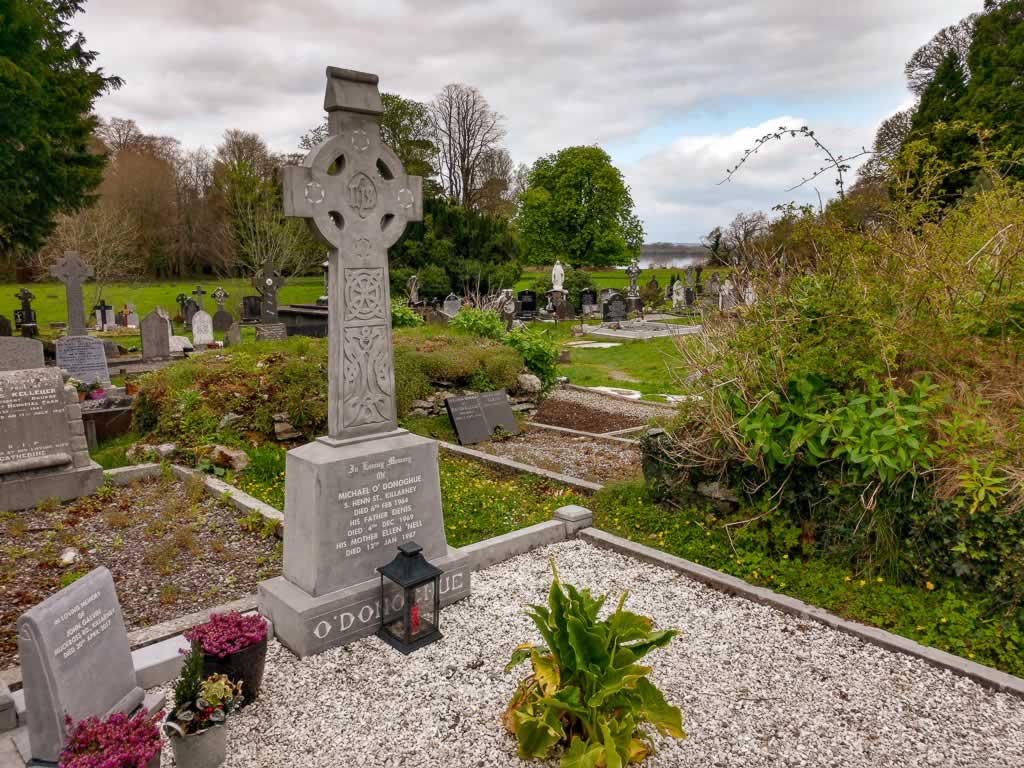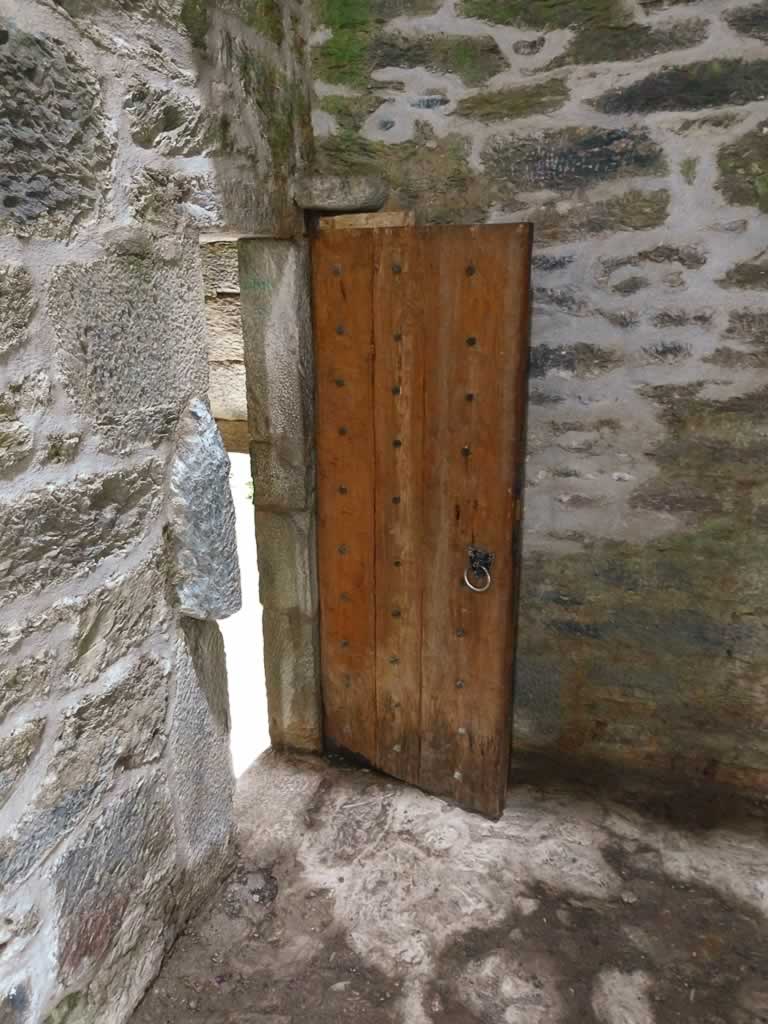Muckross House and Abbey: Historic Ireland

A Travel Guide:
Explore the site of the Republic of Ireland's first National Park. No, it's not Killarney, but instead Muckross House and Abbey. The estate and abbey comprising over 11,000 square acres, was donated by the Bourne and Vincent families to the government as Bourne-Vincent Memorial Park in 1932. Today it rests under the care of the state as part of Killarney National Park.

Being a fan of medieval architecture, I decided to start my walk from the parking lot back toward the Muckross Abbey past a field with a couple of beautiful horses grazing. You can take several paths to the abbey. I took the main paved walking path to get there. It was about a 20 minute walk. There is no charge for either parking or exploring this venerable old abbey.

The Muckross Abbey Cemetery and the Celtic Cross
The first thing to catch my eye are the gravestones. I don't know why I have this obsession with checking out cemeteries, but I do.
No Irish graveyard would be complete without the Celtic Cross. Scholars have debated the origins of the cross and it's added nimbus (or halo). Dating back as far as the 9th century, some believe it may have simply been a reproduction in stone of wooden crosses that required extra support and so they used the circle for strengthening. However it came about, it most likely originated among the Irish.
For a 600 year old abbey, this cemetery is pretty new as you can see by the stones. It is said that some of the O’Donoghue chieftains remains are here. They were the 15th century builders of Ross Castle down the road.

A Brief History of the Muckross Abbey
Walk around the abbey and you see what looks like a pretty impenetrable fortress. Looks can be deceiving though. The friars here dealt constantly with uprisings and the abbey was repaired many times over. In 1652, during the Oliver Cromwell invasion from England, it was burned and looted. After that, the friars no longer inhabited the abbey.

The structure is remarkably well preserved for all the damage it apparently has taken over the years. The above cloisters make for a nice repetitive photo opportunity with the light shining in from the open courtyard. As you explore however, you'll see that much of the roof is missing.

Medieval Doors
The door, seen here, is an example of the hard to penetrate wood doors of the past. Usually featuring iron spikes or pins, these would have been very hard to muscle in. Add to that the two layers of wood, slatted vertically on one side and horizontally on the other, and an axe would have a difficult time splitting this wood.
A Fun Place to Explore
There are multiple layers to this Gothic-era abbey. Dark stairwells will either result in dead end rooms, or walks to the top floor where there was once a roof. Look through the windows to the courtyard and the Yew tree that has been growing there for 500 years.
Robin Hood in His Day: His Spirit Lingers
Born in Ballycarbery Castle near the Kerry Cliffs, the story goes that Donal MacCarthy Mor was the illegitimate son of the last king of Desmond. He was a thorn in the side of the English for many years, his ability to disappear into the woods and then strategically attack his foes, while taking their lands and giving it back to his countrymen earned him the nickname of "Robin Hood of Munster."
The English wanted him captured and hung. It never happened.
Over time, legends built up around Donel MacCarthy Mor. He was active during the Nine Years' War and renowned for his fight and flight skills as well as his drinking and womanizing. His other nickname "Dan of Feathers" was given to him most likely after his death for his efforts at The Fight at the Gap of the Feathers in 1599 when he defeated a larger English force of men. This nickname is present as the name of a walking path leading to Muckross Abbey. The legend suggests he built the abbey, but timelines do not agree as the abbey was built in 1448.
For ghost hunters, it is said he still frequents pubs in Killarney to this day, and can be found at closing time with his girlfriends in tow.

Getting Here
The town of Killarney is located on the western side of Ireland, at the eastern most point of The Ring of Kerry. Drive a couple miles south of town on N71 and watch for signs for the Muckross House.
Once in the parking lot, walk in the direction away from the Muckross House and turn right at the stables. A road will bend off to the right and take you right up to the abbey.
To get back to the Muckross House and see more of the grounds, there is a path on the west side of the abbey (to the left in the picture below) that leads along Lough Leane (lake) and takes you back to the Muckross House on a very scenic route along the water.

Lake Lough is pictured below along with hillsides in Killarney National Park. And finally, the road leads you back to Muckross House.

Muckross House
Muckross House and Gardens (Official Website | Google Maps)
The Muckross House is a beautifully maintained 19th century Victorian era mansion. One of it's inhabitants was Sir Arthur Guinness, the politician and great-grandson of the Dublin brewer and business man.
If you want to see the Muckross House, there is a fee of 9.25€ to 15.50€ for adults and discounted rates for seniors and children - and you can also see the Traditional Farms for an additional fee. There are three different farms and a guided tour will expose you to life on an early 20th century Irish farm. There is also a petting farm for the kids.

Plan a couple hours to explore and take it all in. And add on a trip to Torc Waterfall. You can actually take a trail from the house to the falls. There is plenty to see here in Killarney National Park.
